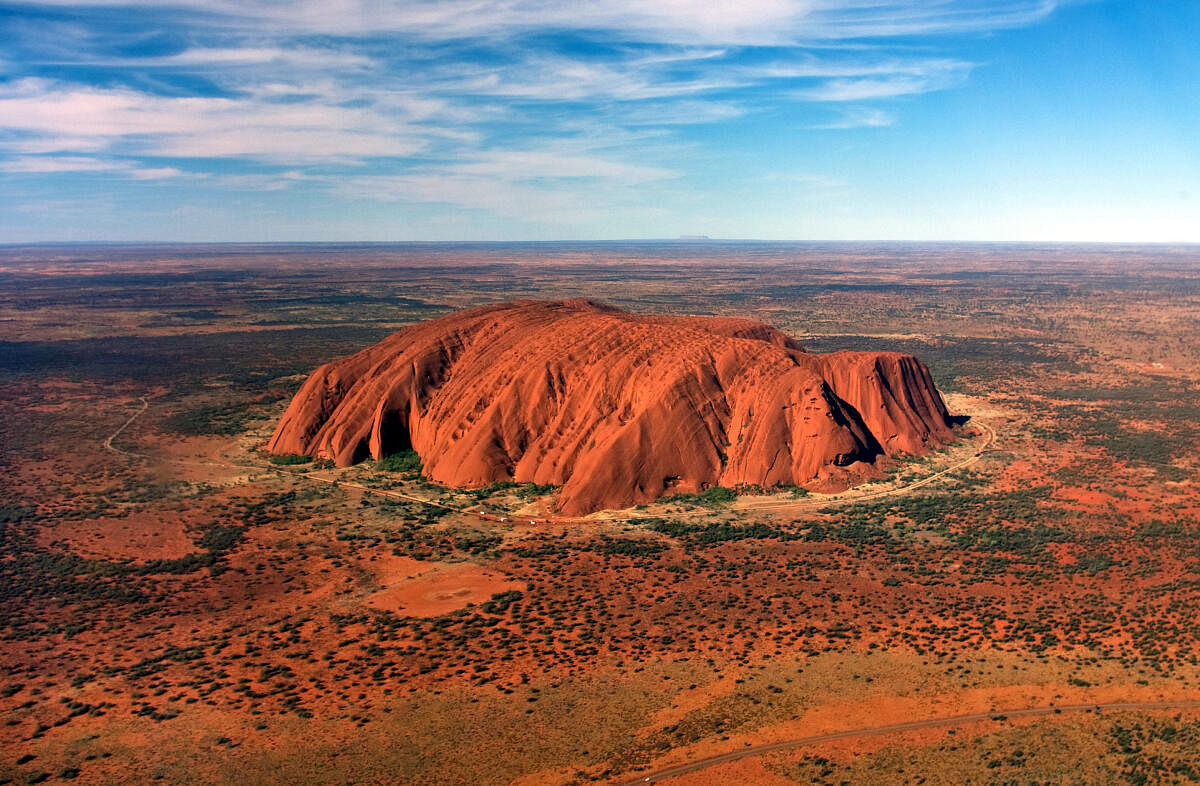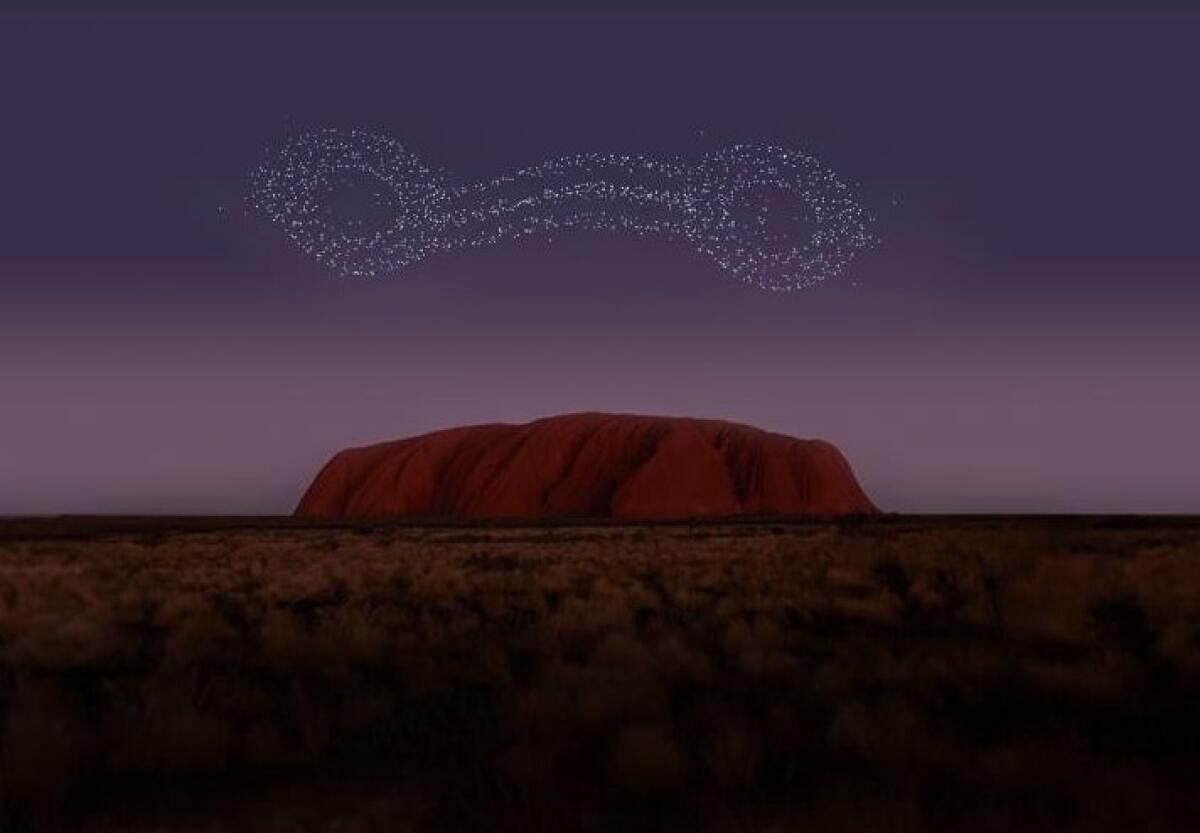

I’m not a big believer in coincidences but my relationship with my favourite spot in Australia began almost by coincidence. I was floating in the clouds, dropping off to sleep when I heard the flight captain’s announcement to look out of the window. I’m glad I took the cue. It was one of the most gorgeous sights I’ve witnessed from a window seat on any airplane, anywhere in the world. A magical sandstorm formation that would define my connection with Australia even before I landed here for the first time. It was not until 2014 — nearly eight years after that sighting, that I finally kept my date with Australia’s spiritual heart. The flight captain called it Ayers Rock but that was 2006. A lot has changed in Australia since then, the official renaming of one of the most revered sites for the traditional custodians of this land is part of this transition.
Uluru is sacred to the Pitjantjatjara, the Aboriginal people of the Central Australian desert. They refer to themselves as Anangu (or just ‘people’). In May 2023, I was among the first people in the world to witness the preview of a new attraction in Uluru that adds a whole new element to this magical landscape. It’s called Wintjiru Wiru which means ‘beautiful view out to the horizon’ in the local Pitjantjatjara language; it more than lives up to its name.
My first visit to Uluru in 2014 took a lot more effort than the time I flew over this UNESCO World Heritage site. That journey began in what Aussies call the ‘Top End’ in Darwin. It was a fascinating drive through the Australian outback, a nearly 2000 km-long road trip that drew me towards Aboriginal traditions and one of the world’s oldest cultures. According to the UNESCO listing, the Tjukurpa is the foundation of the Anangu living cultural landscape associated with the Uluru Kata Tjuta National Park. It was here that I had a conversation with an Aboriginal elder about his mob’s relationship with the landscape. He kept using the word custodian and not owner. It summarised his philosophy of preserving the landscape for the next generation, just like previous generations of his clan had done before him.
As the UNESCO World Heritage description mentions, the Tjukurpa is an outstanding example of traditional law and spirituality. It reflects the relationships between people, plants, animals, and the physical features of the land. Tjukurpa was founded at a time when ancestral beings, combining the attributes of humans and animals, camped and travelled across the landscape. They shaped and created all of the features of the land and its landscapes. The actions of these ancestral beings also established a code of behaviour that continues to be followed by Anangu today. Uluru is one of the world’s largest monolithic natural structures and rises to over 300 metres in height. In 1985 the Australian government returned ownership of this sacred site to the Pitjantjatjara people. It became a popular climbing site although local elders (like the one who interacted with me) urged visitors to avoid climbing this sacred site; I chose not to climb in 2014. The government introduced a ban on climbing in 2019. Uluru changes colours from a dull brown to ochre at sunset and the same magic unfolds at sunrise, a good time to walk around this Aboriginal shrine.
This time I hopped on a Segway for a unique Segway tour that goes around the base of Uluru where you can explore some of the local legends that surround this hallowed site. It’s one of those legends that plays out in Wintjiri Wiru. This story begins with the Mala (rufous hare-wallaby) people who were living in Uluru and conducting a ceremony (or inma). They receive an invitation from the West to participate in another inma. But the Mala people decline the invitation since according to their belief they cannot stop their inma halfway. A large devil dog (called Kurpany) was created to destroy the Mala inma. The legend mentions Luupa, a kingfisher woman; she spots the Kurpany and warns the people; they don’t pay heed.
This spirit shape-shifted into many forms. The Kurpany attacked and killed many Mala men but spared the women. The legend says that the Kingfisher Woman still keeps watch, and the dog’s footprints are embedded in Uluru.
Voyages Ayers Rock Resort who have engineered Wintjiru Wiru, have worked for many months on this show. It’s impossible not to feel goosebumps as more than 1000 drones light up the night sky and work in tandem with the landscape and an array of sound installations and lights.
Photography is strictly prohibited as part of this experience where you are seated in a stunning amphitheatre in the middle of Australia’s Red Centre. You are greeted with cocktails (infused with local ingredients) and a gourmet hamper before you take your seat in the open-air desert theatre set upon a dune top. The photography restriction is a great thing. You can totally immerse yourself in the show and be truly spellbound. More than the stunning sound and lights, I’m delighted that this show documents a powerful Aboriginal story for future generations.